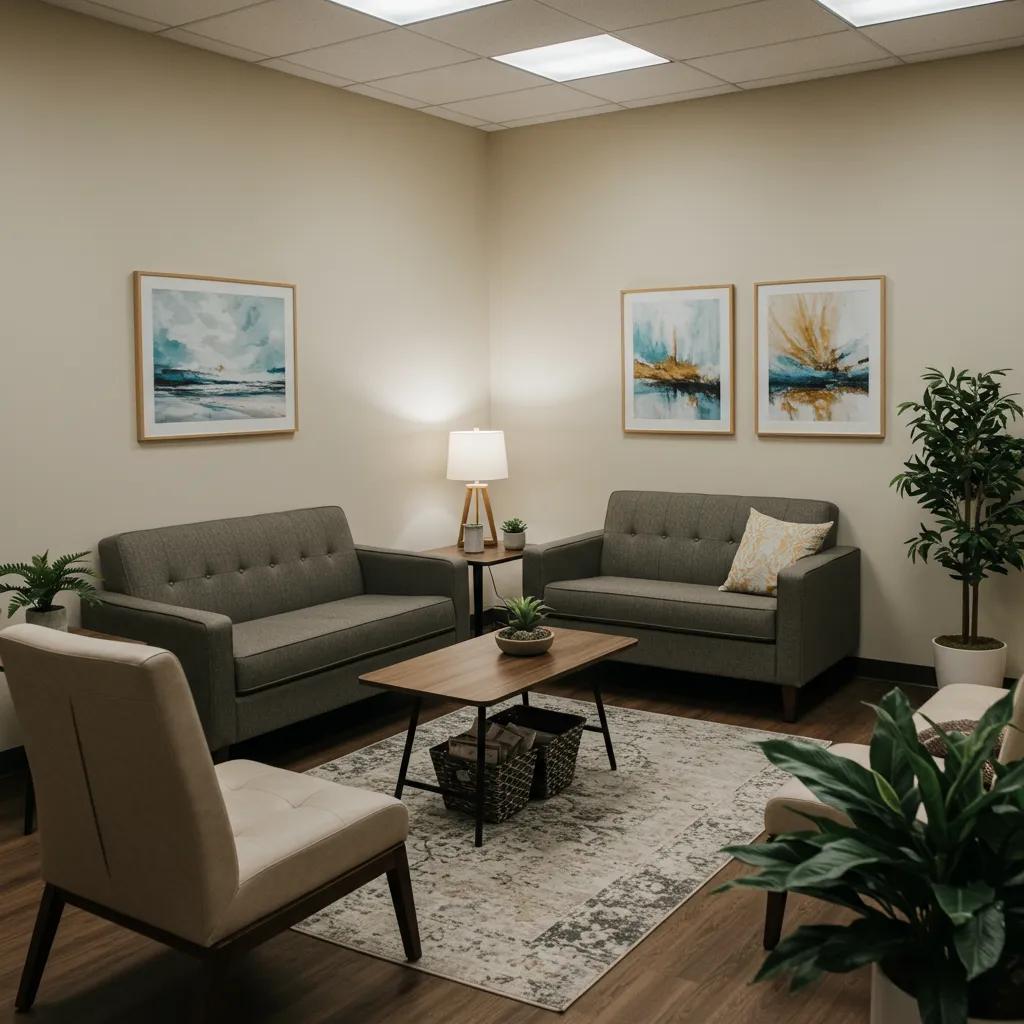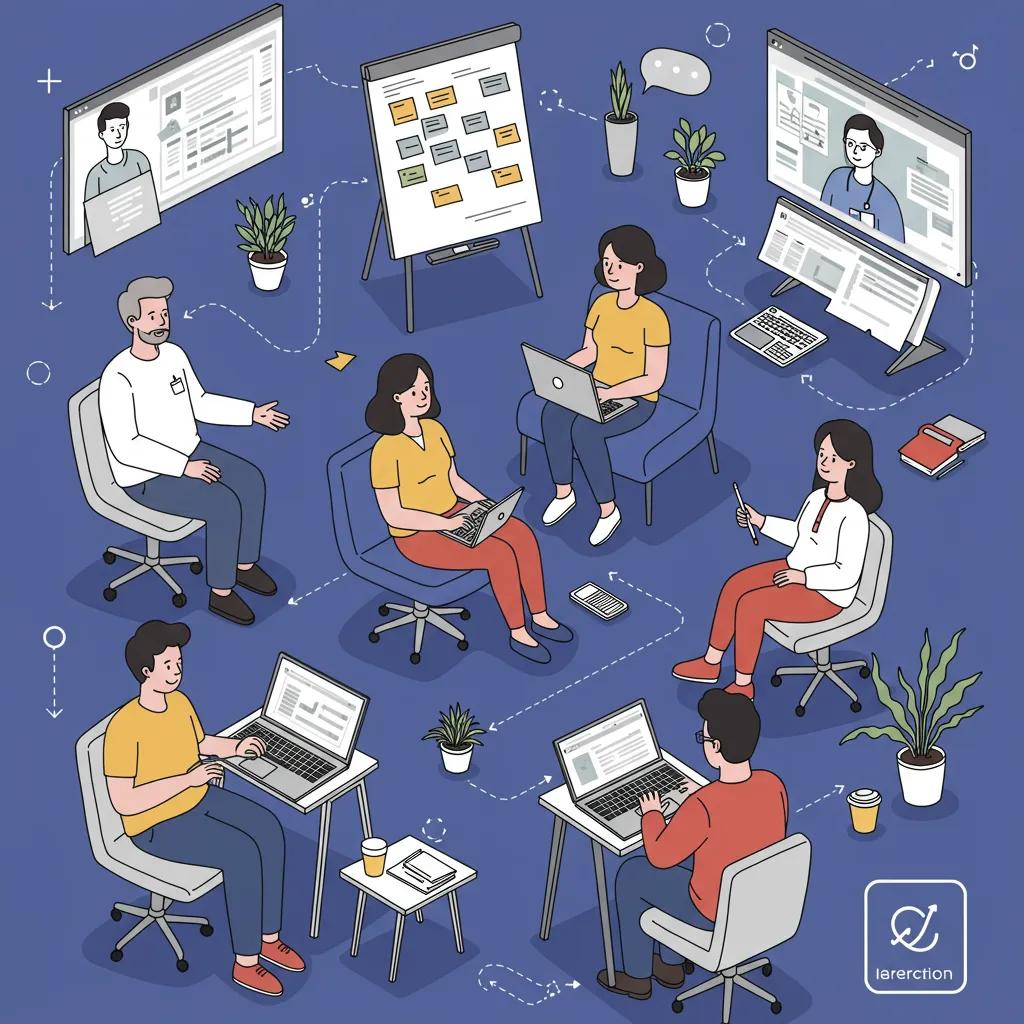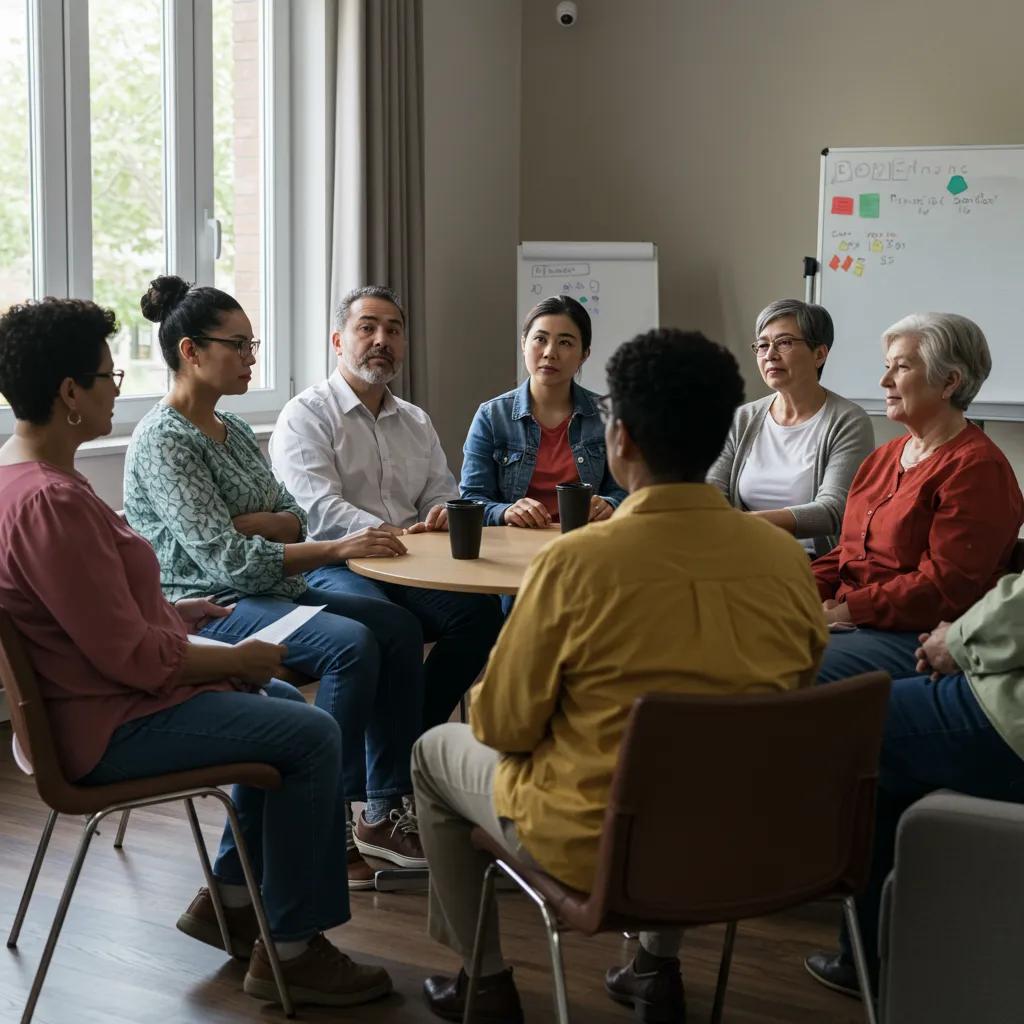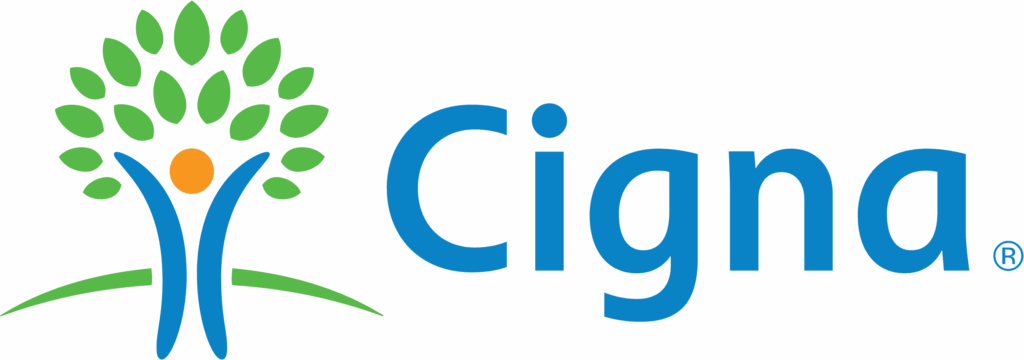
Adult mental health intensive outpatient programs (IOPs) provide structured, evidence-based treatment while allowing participants to maintain work, family, and housing responsibilities. This guide explains what an adult mental health IOP is, how it fits into the continuum of care, and the practical steps adults can take to find a program near them that matches their needs.
Many adults seek an “IOP near me” because they need more support than weekly therapy but do not require 24-hour residential care; IOPs deliver that intermediate intensity through group therapy, individual sessions, medication management, and skill-building. Readers will learn which conditions IOPs commonly treat, how in-person, virtual, and hybrid formats compare, and what to expect from admissions, insurance verification, and outcomes. The article also maps specific program components—group work, family involvement, psychiatry—and provides actionable checklists and tables to find high-quality local options. Throughout, keywords such as mental health iop near me adult, virtual iop for adults, and adult IOP insurance coverage are used naturally to help you locate and evaluate appropriate care.
An adult mental health intensive outpatient program (IOP) is a structured outpatient treatment that provides several hours per week of coordinated clinical care including group therapy, individual therapy, and psychiatric services. IOPs work by combining evidence-based psychotherapy modalities—such as CBT and DBT—with medication management and practical skill modules to reduce symptoms and improve daily functioning. The clear benefit is delivering intensive support while enabling adults to live at home and continue work or school responsibilities, which supports real-world practice of new skills. Understanding how IOP fits into the continuum of care clarifies when to choose IOP and what outcomes to expect, which leads naturally into comparing IOP with other levels of care.
An IOP differs from standard outpatient therapy, partial hospitalization (PHP), and inpatient/residential care mainly by intensity, supervision, and time commitment. IOPs typically provide 9–20 hours per week of combined group and individual therapy, placing them above weekly outpatient therapy but below PHP and inpatient settings in medical supervision and daily monitoring. This structure allows participants to receive frequent therapeutic contact and skills training without being hospitalized, making IOPs appropriate for stabilization and skill-building. When choosing care, clinicians weigh symptom severity, safety needs, and the person’s ability to engage in daily responsibilities, which guides whether IOP or another level of care is most appropriate.
Adults who are appropriate for IOP generally have moderate symptoms that respond to psychotherapy and medication, can maintain basic daily responsibilities, and require more support than weekly therapy provides. Typical referral reasons include persistent anxiety or depression that impairs functioning, early recovery from acute crisis, the need for structured group skills training, or management of co-occurring substance use with mental health care. Red flags for higher levels of care include active suicidal intent, severe medical instability, or inability to care for self, which prompt consideration of inpatient or PHP settings. A short self-assessment—tracking symptom frequency, functional impairment, and safety concerns—helps determine candidacy and prepares individuals for the intake conversation.

Adult IOPs commonly run for 6–12 weeks, with flexibility to extend or step-down based on clinical response and functional goals. Weekly time commitments typically range from 9–20 hours, delivered as multi-hour group sessions two to five times per week plus periodic individual therapy and psychiatry appointments. Factors influencing length include co-occurring disorders, progress on skill acquisition, medication stabilization, and insurance coverage parameters; programs tailor schedules to balance intensity and life obligations. Knowing typical duration and scheduling options helps prospective participants plan logistics, such as work accommodations and transportation, before starting treatment.
Adult IOPs treat a broad set of psychiatric conditions using targeted, evidence-based interventions and coordinated care planning. Programs commonly include tracks or tailored modules for anxiety disorders, depressive disorders, trauma-related disorders including PTSD, bipolar disorder stabilization, eating disorder partial treatment, and integrated care for dual diagnosis (mental health plus substance use). The mechanism for improvement combines psychotherapy (CBT, DBT, trauma-informed care), medication review by psychiatry, and group-based skill practice to reduce symptoms and improve functioning.
The following table provides a quick reference comparing core conditions treated in adult IOPs and core treatment elements.
| Condition | Typical IOP Interventions | Expected Outcomes / Goals |
|---|---|---|
| Anxiety disorders | CBT, exposure-based group modules, skills training | Reduced avoidance, improved coping, functional gains |
| Depressive disorders | Behavioral activation, CBT, group process | Symptom reduction, improved motivation, daily functioning |
| PTSD / trauma-related disorders | Trauma-informed stabilization, trauma-focused CBT | Safety, reduced intrusive symptoms, emotion regulation |
| Bipolar disorder | Mood monitoring, psychoeducation, medication coordination | Mood stabilization, relapse prevention, functioning |
| Eating disorders | Nutritional coordination, CBT/DBT modules, medical monitoring | Symptom reduction, medical stabilization, healthier behaviors |
| Dual diagnosis (SUD + MH) | Integrated addiction counseling, MAT coordination, relapse prevention | Reduced substance use, improved psychiatric stability |
This comparative view clarifies which core interventions produce which outcomes and helps prioritize questions when contacting local programs.
IOP approaches for anxiety and depression combine structured group skills training with individualized therapy and psychiatric oversight to produce measurable symptom reduction. Cognitive Behavioral Therapy (CBT) and behavioral activation are central techniques, complemented by exposure work for anxiety and group-led practice to generalize skills to real-life situations. Medication management is integrated where appropriate, with psychiatric evaluation and follow-up to optimize pharmacotherapy alongside psychotherapy. The synergy of group practice and individualized planning accelerates skill acquisition and supports sustained functional gains, which leads naturally to trauma-focused considerations.
Trauma-informed IOPs begin with stabilization, safety planning, and skills for emotion regulation before progressing to trauma-focused interventions where clinically appropriate. Commonly used modalities include trauma-focused CBT, stabilization modules drawn from DBT, and in some programs EMDR-informed approaches when indicated and resourced. Group therapy provides peer validation and opportunities to practice grounding and coping skills, while individual sessions allow for careful pacing of trauma processing. These layered strategies prioritize safety and gradual exposure to reduce symptoms without overwhelming participants, and they pair with ongoing psychiatric review when medications support stabilization.
Dual-diagnosis IOPs use integrated treatment models that address mental health and substance use concurrently through coordinated teams and shared care plans. Principles include treating both conditions as interconnected, using addiction counseling techniques (e.g., relapse prevention), medication-assisted treatment where indicated, and frequent communication between therapists and prescribers. The integrated model improves engagement by aligning goals across disciplines and reduces gaps that can produce relapse; expect coordinated monitoring and contingency planning. Outcomes data indicate integrated approaches yield better reductions in substance use and psychiatric symptoms compared with parallel, uncoordinated care.
Adult Mental Health IOP Utilization Patterns and Service Engagement
The purpose of the study is to 1) better understand patterns of utilization of Intensive Outpatient Treatment (IOP) Programs and Services in the State of Connecticut by adult Medicaid recipients experiencing a serious mental illness, substance use disorder, or co-occurring disorders; and 2) to determine the relationship between the duration of an IOP episode and connection to care rates for higher (i.e., rehospitalization) or lower levels of care following discharge. We hypothesized that the duration of an IOP episode would impact positively in reducing the use of higher levels of care while increasing the use of lower levels of care. In order to examine the frequency and duration of use of Intensive Outpatient (IOP) services by the CT Medicaid population, a two-year timeframe was selected: July 1, 2012 to June 30, 2014. A survival analysis was conducted to assess the risk of readmission to an IOP within 180 days based on demographic and utilization factors including, Age (in years on date of discharge), Race and Ethnicity, Gender, Homeless Status (at least one day in CY 2013), and Engagement Group (Intent to Treat, Early Termination, Minimally Adequate Dosage, & Target or More). To better understand the patterns of utilization associated with Adult IOP services, the average length of stay, number of treatment days, and average number of treatment days per week were explored. The number of unique individuals who were part of this analysis is 11,473, of which 2050 were mental health IOP utilizers (18%), 4598 were co-occurring IOP utilizers (40%), and 4825 (42%) were substance use IOP utilizers. For the total population, the average length of stay (ALOS) in days was 42 and the average number of treatment days attended per week was 2.5, for an average of 15 treatment days per episode of care. Among the IOP Cohorts, the Mental Health Cohort had the longest ALOS at 44.15 days, an average of 2.34 days of service per week, for an average of 14.76 days of IOP service per
Intensive outpatient treatment (IOP) of behavioral health (BH) problems: engagement factors predicting subsequent service utilization, M Costa, 2020
Research into utilization patterns provides valuable insights into how long individuals typically engage with IOP services and how this duration correlates with subsequent care needs.
Yes, many adult IOPs include specialized modules for bipolar disorder stabilization and partial outpatient care for certain eating disorder presentations, with careful clinical and medical oversight. Bipolar-focused IOP work emphasizes mood monitoring, medication adherence, psychoeducation, and routines to stabilize sleep and activity, while eating disorder pathways integrate nutritional oversight, medical monitoring, and CBT-based behavior change. Both conditions often require close psychiatric involvement and sometimes adjunctive medical services, and clinicians may recommend higher levels of care when medical instability or severe impairment is present. When IOP is appropriate, specialized group curricula and individualized plans support functional recovery and relapse prevention.
Adult IOPs are offered in three primary delivery formats— in-person, virtual, and hybrid—each with distinct logistical and clinical trade-offs that affect accessibility and outcomes. In-person IOPs provide direct clinician contact, on-site medication clinics, and stronger group cohesion, while virtual IOPs increase access for remote or working adults through telehealth platforms with privacy safeguards. Hybrid models combine both approaches to maximize continuity and flexibility, for example by offering initial intake in-person and conducting follow-up groups virtually. Understanding these formats helps you choose based on commute, private space at home, technology access, and preference for face-to-face contact.
Before the comparison table below, note this list explains what the table will summarize and why format choice matters.
| Program Type | Typical Schedule / Format | Pros | Cons / Best For |
|---|---|---|---|
| In-person IOP | Multi-hour onsite groups 2–4x/week plus in-clinic psychiatry | Strong group cohesion; on-site medical services | Requires travel; best for those needing local support |
| Virtual IOP | Live video groups and telehealth psychiatry, scheduled sessions | Accessible for remote/work schedules; reduces commute | Needs private space and stable internet; privacy planning required |
| Hybrid IOP | Mix of initial in-person intake followed by virtual/in-person groups | Flexible continuity; combines strengths of both formats | Scheduling complexity; requires tech support and facility coordination |
This table helps match individual needs—such as transportation limits or desire for in-person contact—with program formats that best support recovery.
In-person adult IOPs offer direct clinician observation, immediate access to on-site services like medication clinics, and stronger opportunities for group cohesion and role-modeling. These features support more intensive monitoring of medical or safety needs and facilitate hands-on interventions, including in-person family sessions when needed. For participants who lack private space at home or who benefit from face-to-face social learning, in-person settings foster accountability and peer support that can accelerate change. Recognizing these benefits clarifies why some adults prefer facility-based care despite logistics like travel and scheduling.
Virtual adult IOPs deliver scheduled live group sessions, individual teletherapy, and remote psychiatric consultations via secure telehealth platforms that implement encryption and privacy practices. Typical virtual schedules mirror in-person intensity with multi-hour group blocks and periodic individual check-ins, and programs often provide onboarding for technology and guidance to ensure confidentiality. Research and telehealth adoption show virtual formats improve access for rural and working adults while producing comparable short-term symptom reductions for many conditions when platforms maintain clinical fidelity. Understanding platform security and a provider’s telehealth policies helps prospective participants prepare for effective virtual participation.
A hybrid adult IOP combines in-person and virtual elements to support flexibility while preserving opportunities for face-to-face assessment or important clinical interventions. Common hybrid models include an initial in-person assessment and periodic on-site sessions with primarily virtual groups in between, or in-person groups for certain modules and telehealth for follow-up psychiatry. Hybrid care suits adults who need periodic direct clinical contact but require remote access for regular attendance due to work, caregiving, or transportation barriers. Operationally, hybrid programs require scheduling coordination and technology support, which programs typically address during intake.
Core components of adult mental health IOPs include group therapy, individual therapy, family therapy when appropriate, psychiatric medication management, and structured skill-building modules; together these elements form an integrated treatment plan. Group therapy provides peer learning and skills practice, individual sessions tailor goals and address private concerns, family involvement supports relational changes, and psychiatry optimizes medication strategies aligned with therapy goals. Skill-building modules—often drawn from DBT, CBT, and relapse-prevention curricula—teach coping techniques that patients practice between sessions to generalize gains. The interplay of these components—coordinated by a treatment team—supports symptom reduction and sustained functional improvement.
Group therapy in IOPs functions as a primary vehicle for skills acquisition, peer support, and real-life practice of coping strategies under clinician guidance. Groups often follow structured curricula—such as DBT skills or CBT-based modules—so members learn and rehearse techniques together, receive feedback, and normalize experiences. Facilitators manage group composition to balance diagnosis-specific needs with diverse perspectives, promoting safety and engagement while modeling interpersonal effectiveness. The group context speeds skills generalization to daily life and complements individual therapy where deeper, private issues are addressed.
Individual therapy in IOPs provides personalized assessment, focused problem-solving, and tailored interventions that support progress within the broader group curriculum. These sessions prioritize goals that may not be suitable for group discussion, such as trauma processing, individualized behavioral planning, or coordination for complex medication changes. Regular individual meetings allow clinicians to monitor progress, adjust treatment targets, and ensure integration between group learning and personal recovery objectives. Strong coordination between therapists and psychiatry enhances consistency and treatment fidelity across modalities.
Family therapy in adult IOPs is typically voluntary and aimed at education, boundary-setting, and improving communication while respecting adult consent and autonomy. Programs may offer caregiver education modules, occasional family sessions to align supports, and guidance on relapse prevention strategies within the household. Consent, confidentiality, and adult client preferences guide the extent of family involvement, and clinicians set clear boundaries to protect autonomy while leveraging family as a recovery resource. Engaging families when appropriate improves treatment adherence and post-discharge support.
Medication management in IOPs involves regular psychiatric evaluation, prescription oversight, side-effect monitoring, and coordination with therapists to align pharmacotherapy with psychotherapy goals. Psychiatrists or psychiatric nurse practitioners provide initial medication reviews, periodic follow-ups, and dosing adjustments as symptoms evolve. Communication pathways between prescribers and therapists enable synchronized care plans and rapid responses to changes in clinical status. Close medication monitoring supports stabilization and complements behavioral interventions to enhance functional recovery.
Skill-building in IOPs uses structured curricula—drawing from DBT, CBT, mindfulness, and relapse-prevention models—to teach emotion regulation, distress tolerance, cognitive restructuring, and interpersonal effectiveness. Sessions combine didactic teaching, role-play, homework assignments, and real-world exposure tasks to solidify learning and measure uptake. Programs track skill acquisition through symptom scales, homework completion, and clinician observation, adjusting instruction to reinforce gaps. Practicing skills in group and between sessions fosters durable behavior change and prepares participants for step-down care.
Implementing Evidence-Based Practices in Adult Intensive Outpatient Programs
In recent decades, attention to the 17-year research-to-practice gap has led to an expansion in the fields of dissemination, implementation, and services (DIS) research (Chambers, Pain 159:S56–S64, 2018). Transportation and adoption of evidence-based practices in intensive outpatient and partial hospitalization programs (IOPs and PHPs, respectively), however, remain challenging in light of more complex diagnostic presentations, contextual issues such as family conflict and resource scarcity, and higher rates of patient readmission (American Psychological Association, Serious Mental Illness Psychology.https://www.apa.org/ed/graduate/specialize/serious-mental-illness, 2019; Leffler and D’Angelo, Journal of Cognitive Psychotherapy 34:185–199, 2020). Fortunately, existing evidence in DIS science reveals theoretical models with practical applications to the implementation of evidence-based practices in IOP and PHP settings. This chapter reviews DIS strategies as they apply to the unique patient, therapist, and organizational characteristics of IOPs and PHPs; provides considerations for training factors and methods; and concludes by discussing implications for future research.
Implementation and Training, HA MacPherson, 2022
Bridging the gap between research and practice is crucial for ensuring that adult IOPs effectively implement evidence-based interventions, despite challenges like complex patient needs and resource limitations.
Finding the best adult mental health IOP near you requires targeted searching, verification of clinical credentials and formats, and practical checks for insurance, technology, and logistics. Start by filtering programs by format (in-person, virtual, hybrid), conditions treated (e.g., dual diagnosis, PTSD, bipolar), and services offered (medication management, family involvement). Vet programs by asking about evidence-based modalities, clinician qualifications, outcome tracking, telehealth privacy measures, and scheduling flexibility.
The table below offers an actionable admissions and search checklist to apply when evaluating local IOPs.
| Step | Action | Resources / Tools |
|---|---|---|
| 1. Search & shortlist | Filter by format, conditions treated, and availability | Local provider directories, telehealth listings |
| 2. Verify credentials | Ask about clinician licensure and evidence-based modalities | Intake scripts, licensure boards |
| 3. Check insurance & cost | Confirm coverage, prior auth needs, and out-of-pocket estimates | Insurance customer service, billing checklist |
| 4. Tech & privacy check | Test telehealth platform and privacy policies | Platform demo, consent forms |
| 5. Logistics planning | Confirm schedule fit, transportation, and aftercare plans | Employer/education notes, transit options |
This checklist structures the search and admission process, reducing uncertainty and helping you compare programs on concrete criteria.

Local resources that support IOP participation include primary care referrals, community mental health centers, peer support groups, crisis hotlines, and transportation services that reduce barriers to attendance. Primary care and emergency departments often provide referrals to outpatient and IOP services, while community organizations may offer sliding-scale supports and peer-led groups. Practical logistic supports—such as public transit routes, rideshare options, or employer accommodation letters—help maintain consistent attendance. Identifying and leveraging these local supports before starting IOP improves retention and treatment outcomes.
Common local supports include:
Verifying insurance coverage requires asking specific questions about in-network status, prior authorization requirements, session limits, and out-of-pocket estimates; prepare a short script to call your insurance customer service. Ask the program’s billing team whether psychiatry visits, group sessions, and labs are billed separately and whether they assist with preauthorization and appeals. If uninsured or out-of-network, inquire about sliding scale fees, payment plans, or community resources that reduce cost burden. Clear cost conversations before intake prevent surprises and help plan sustainable access to care.
Use this insurance-check script when calling providers:
Follow-up with the program billing team to confirm and document answers for reference.
This approach streamlines financial planning and helps you select programs that match coverage and budget constraints.
Admissions to adult IOPs typically involve an initial referral or self-referral, a clinical intake assessment, medical/psychiatric evaluation, and scheduling of the first treatment block. Intake assesses diagnosis, safety, medical stability, and functional goals, and it collects consent and insurance information required for enrollment. Timeframes vary, but many programs can schedule an intake within days to weeks depending on capacity and urgency; ask about waitlist procedures and crisis pathways. Preparing documentation—such as recent medication lists, prior assessments, and insurance details—smooths the process and shortens time to treatment.
Adult IOPs demonstrate measurable improvements across symptom severity, functional outcomes, and reduced need for higher levels of care when programs use evidence-based modalities and integrated services. Outcome monitoring typically includes symptom scales, attendance and engagement metrics, and functional assessments tied to return-to-work or social participation goals. Aggregated data and anonymized vignettes often show meaningful symptom reduction within 6–12 weeks and improved daily functioning for many participants. Understanding typical outcome domains and how programs measure progress helps you ask the right questions during program selection.
IOPs improve mental health by combining repeated skills practice, cognitive and behavioral restructuring, medication optimization, and social reinforcement through groups, which collectively reduce symptoms and improve coping. Progress is tracked via validated scales, clinician observations, and functional benchmarks such as work attendance or relationship improvements. Aftercare planning and step-down services (e.g., outpatient therapy, peer supports) maintain gains and reduce relapse risk. These mechanisms produce improvements in mood, anxiety, and adaptive functioning that are measurable over the course of treatment.
Patients commonly report that peer support, practical skills, and a structured schedule were key contributors to early improvements in coping and functioning during IOP participation. Qualitative themes include increased confidence in managing symptoms, better interpersonal skills, and appreciation for coordinated psychiatry and therapy. Programs responsibly present anonymized success themes—emphasizing variability in timelines and the importance of continued aftercare—to help prospective participants set realistic expectations. These experiential insights complement outcome data and highlight the role of human connection in recovery.
Integrated care in IOPs enhances recovery for dual diagnosis by coordinating mental health and substance use interventions within a single, multidisciplinary plan that addresses both conditions simultaneously. Shared care plans, co-located services or tight provider communication, and combined relapse-prevention and psychiatric strategies reduce gaps that often undermine recovery. Evidence supports integrated models in improving both substance use outcomes and psychiatric stability, in part because coordinated monitoring and shared goals foster consistent engagement. Operational examples include joint team meetings and synchronized medication and counseling schedules to reinforce progress.
This FAQ-style section answers common practical questions about IOP session structure, outpatient classification, scheduling with work or school, and virtual privacy to clarify logistical concerns for prospective participants. The answers are concise and focused to support decision-making and to serve as quick references for people comparing local programs. Clear, actionable responses help remove uncertainty and enable timely enrollment and preparation for treatment.
A typical IOP session begins with brief check-ins, follows with a structured skills module or therapeutic group exercise, includes time for process and peer feedback, and ends with homework assignments or individualized planning. Facilitators balance didactic teaching with experiential practice, role plays, and problem-solving tailored to group needs; individual sessions focus on personalized goals and safety planning. Sessions emphasize repetition and outside practice so skills transfer to daily life, and participants are usually assigned between-session tasks to reinforce learning. This predictable structure supports progress and prepares participants for the next level of care.
IOP is classified as outpatient care because participants live at home and return to their usual environment each day rather than staying overnight in a facility. Outpatient classification affects daily life—participants can maintain employment or schooling—and has implications for billing and coverage, as insurers typically differentiate outpatient benefits from inpatient or PHP benefits. Understanding this classification helps individuals plan logistics and confirm insurance coverage type prior to admission. This outpatient status preserves community integration while providing enhanced clinical intensity.
Many adults successfully participate in IOP while working or attending school by choosing flexible scheduling options such as evening groups, part-time schedules, or virtual attendance where available. Programs often offer multiple cohort times to accommodate common schedules, and early communication with employers or educational institutions—supported by documentation from the program—facilitates necessary accommodations. Time-management strategies, supervisor conversations focused on confidentiality, and use of hybrid or virtual formats reduce conflict between treatment and responsibilities. Planning schedule fit before enrollment improves attendance and treatment effectiveness.
Virtual IOPs ensure privacy through use of secure, HIPAA-aligned telehealth platforms that employ encryption, password-protected sessions, and clinician verification procedures; programs obtain informed consent specific to telehealth. Providers typically give patients guidance on creating private spaces, using headphones, and testing connection stability prior to sessions to reduce inadvertent breaches. Clinicians document telehealth practices and maintain the same confidentiality standards as in-person care, including secure record keeping and controlled access to session recordings if any. Clear telehealth policies and patient preparation promote confidential, effective virtual participation.
We are 100% in Network Provider. Most of our clients pay $0 out of pocket.



